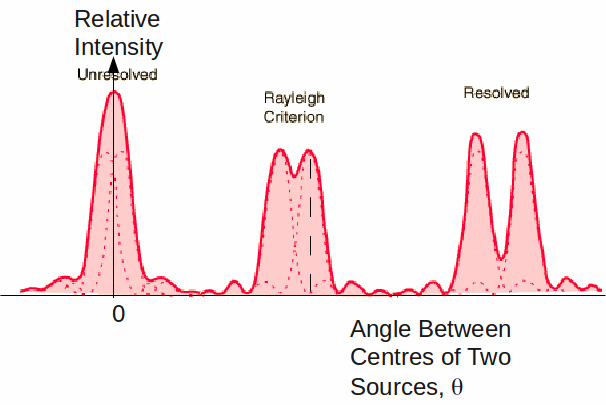Resolutioin - The Rayleigh Criterion
If two point sources of light are very close to each other, it may be hard to tell them apart. Each source will produce a diffraction patter when the light passes through an aperture. As the two sources get closer together the diffraction patterns will overlap as shown below.

The ease with with two sources of light can be resolved into separate sources depends on the angle between them. The Rayleigh criterion for resolving two sources states that two they can be resolved if the first minimum of one source is at the same angle as the maximum of the other.
If the diffraction patter takes place at a slit, the Rayleigh criterion states the two sources can be resolved if the angle between them is![]() where
where![]() is the size of the slit. If diffraction takes place at a circular aperture, the Rayleigh criterion gives
is the size of the slit. If diffraction takes place at a circular aperture, the Rayleigh criterion gives![]()
Example. A motorcycle has twin headlights which emit light with an average wavelength of 550m. If the diameter of the pupil is 4.3 mm, at what distance can the two headlights be resolved?
![]()
This is equal to the angle subtended by the headlights at a distance D. If the headlights are a distance 20 cm apart, then
![]()